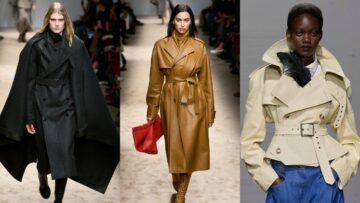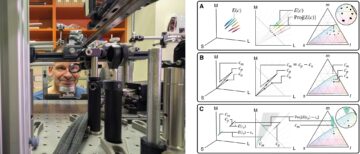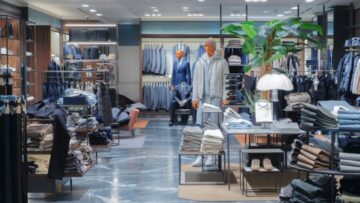
Experts believe by making high-end products and value additions, garment makers in Bangladesh can get premium prices from international retailers and brands. But then what stops them from doing so?
“Lack of innovative capabilities in the areas of designing and product development and expertise, skills and technologies, and limited diversification in the area of non-cotton are some of the major roadblocks to enhance our presence in the high-end segment of the global fashion market,” explains BGMEA President, Dr Rubana Huq, while adding that China has achieved excellence in all the segments of the global fashion market, and Vietnam, having heavily invested in backward and forward linkages by external investors, has also moved forward in terms of value addition than Bangladesh.
Lately though, on a positive note, the industry seems to be shifting away from basic and semi-high-end products as around 40 per cent of all garment items shipped from Bangladesh are high-end items now, said industry insiders.
Price points have always been a major concern area for the garment makers in Bangladesh! From the industry’s profile, it is pretty much evident that it is primarily a volume-driven sector where basic items (produced in mass scale) play a major role. But, as is well known, profit margins in such products are also wafer thin.
And now with the Coronavirus pandemic, prices of apparel items – price of readymade garment products had been decreasing for the last five years on the global market – have suffered a serious setback with reports suggesting prices of Bangladeshi RMG products decreasing by 5.23 per cent in September while the fall in October was 4.15 per cent and in November 4.92 per cent.
Also Read: An analysis of PLI scheme for textile industry
It may be mentioned here that earlier citing a McKinsey report, Bangladesh Garment Manufacturers and Exporters Association (BGMEA) President Dr Rubana Huq underlined that COVID-19 would wipe off US $ 297 billion from the global apparel value in 2020 while the global sales revenue would dip up to 27-30 per cent due to the pandemic. She as such demanded policy support from the Government to fight with the fallouts of the pandemic while also calling for support in research and development and trial production for new products and product diversification.
The recent turn of events has once again brought the focus back on high-end products and value additions, which experts underline can fetch garment makers in Bangladesh premium prices from international retailers and brands, but somehow, despite being in the business of garment manufacturing and exports for almost 40 years now, this continues to elude the country still.
However, even as Bangladesh continues to be a prominent manufacturer of basic or semi-high-end garment items, many of its competitors like Vietnam and India have already made the much-needed transition. Vietnam in particular, which made its foray into the fashion business after Bangladesh, has become an important player in the global high-end garment segment.
Experts predominantly hold investment in research and development, in design and product quality has enabled Vietnam to make the transformation while Bangladesh they say continues to struggle still to graduate into making high-end apparel items due to a host of reasons.
Big clients need big initiatives, which Bangladesh is lacking in, said the Chairman and CEO of Viyellatex Group, KM Rezaul Hasanat, who is a major exporter of value-added garments while adding that there are certain bottlenecks that discourage high-end buyers from coming to Bangladesh.
Although it is difficult to quantify the high-end garment items exported from Bangladesh, some industry insiders say its share is more than 30 per cent while as per KM Rezaul Hasanat, around 40 per cent of the total garments exported from the country are reportedly value-added items.
Says, the Managing Director of Ananta Group Limited (Ananta is another exporter of high-end garments and majorly exports denim jeans, suits and lingerie) Sharif Zahir, “The demand (for high-end product) is good, but it takes a few years to make a profit from a factory meant for producing high-end products,” while adding even after three years of exports of high-end garments, he has yet to make a profit from that factory, indicating perhaps another reason why making of value-added and high-end garments failed to gain the desired traction amongst garment makers in the country.
As per Sharif, 20 per cent of his total export include high-end items, 50 per cent is medium and the rest includes basics.
According to a research carried out by the apex garment makers’ body in the country, BGMEA, around 80 per cent of the garment exports fall within the price range of US $ 15 per kilogram, and only 20 per cent items get a price more than US $ 15 and a tiny fraction gets US $ 35.
Though it is difficult to capture the trend for the product range above US $ 15 per unit, it may be generalised that Bangladesh’s progress towards adding higher values has been slow, the research said pointing towards the fact that contrary to adding higher values, the trend suggests that it has lost 1.79 per cent unit value of the garment exported in the last five years.
Meanwhile, interacting with the media, the Executive Director of the Policy Research Institute of Bangladesh, Ahsan H Mansur said Bangladesh is strong in manufacturing garments from cotton fibre and nearly 80 per cent of garment items in Bangladesh are manufactured from cotton.
However, the demand for cotton garment items is declining worldwide, maintained the Ahsan while underlining that production of high-end garment items requires man-made fibres, in which Bangladesh is still very weak.
Perhaps keeping such concerns in consideration, the Government of Bangladesh is slowly but steadily opening the doors to attract foreign investment in the RMG sector with the Commerce Ministry recently formulating policies and guidelines keeping opportunities for the global investors to expand and facilitate the businesses of the sector.
But many thinks, there is no need for foreign investment openly, rather FDI should be allowed for heavy investment in manufacturing of high quality products, manmade fibres and woven fabrics while on the other hand, economists and trade analysts believe that the country badly needs to produce high-end products while also trying to increase production capacity in the apparel industry.
“There is no need of foreign investment in the garment sector in present context, as we have highest capability to make quality RMG products. But the foreign investment should inspire only for manufacturing manmade fibres,” reportedly maintained Md Siddiqur Rahman, Vice-President of the FBCCI and former President of BGMEA while Senior Vice-President of BGMEA, Md Faisal Samad, on his part stated foreign investment in sector should be allowed conditionally and it should be given only for manufacturing high-value products and woven fabrics as 60 per cent of the fabrics are being imported from China.
“It will increase skills of workers and will help local entrepreneurs in making high-quality products. So, the foreign investment should be beyond the traditional,” Faisal said even as Ahsan H Mansur maintained that FDI was very important for the RMG sector as it will bring in new technology.
Besides, backward linkage will be built to manufacture artificial and manmade fibres for woven along with the initiatives to increase local and foreign investment in the sector, the guideline of the Commerce Ministry highlighted.
“We have opportunities in the EU and the USA, as well as in emerging Asian markets that include Japan, China, India, and Korea, and other regions like Russia and Australia,” Dr.Rubana Huq said, adding China has achieved excellence in all the segments of the global fashion market, and Vietnam, having heavily invested in backward and forward linkages by external investors, has also moved forward in terms of value addition than Bangladesh.
On the positive side, lately the industry is but gradually shifting away from basic and semi-high-end products as around 40 per cent of all garment items shipped from Bangladesh are high-end products, said industry insiders, who have called upon the Government to ease the rules on the use of fabric imported duty-free to help local manufacturers shift to high-end apparels.
“If needed, we will amend the rules,” said Commerce Secretary Md Jafar Uddin, adding “We will examine it, and if we can observe that it is necessary to increase our export, we will amend the rules soon.”
Considering the willingness of the Government to extend the support required and the inclination of the garment manufacturers to graduate to the next, it is just a matter of time before Bangladesh is able to establish itself as a global leader in high-end apparels as well.






